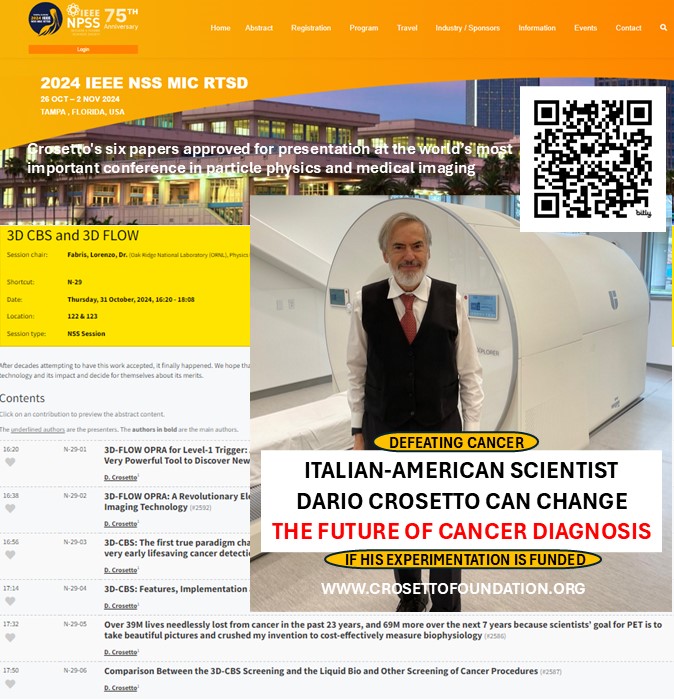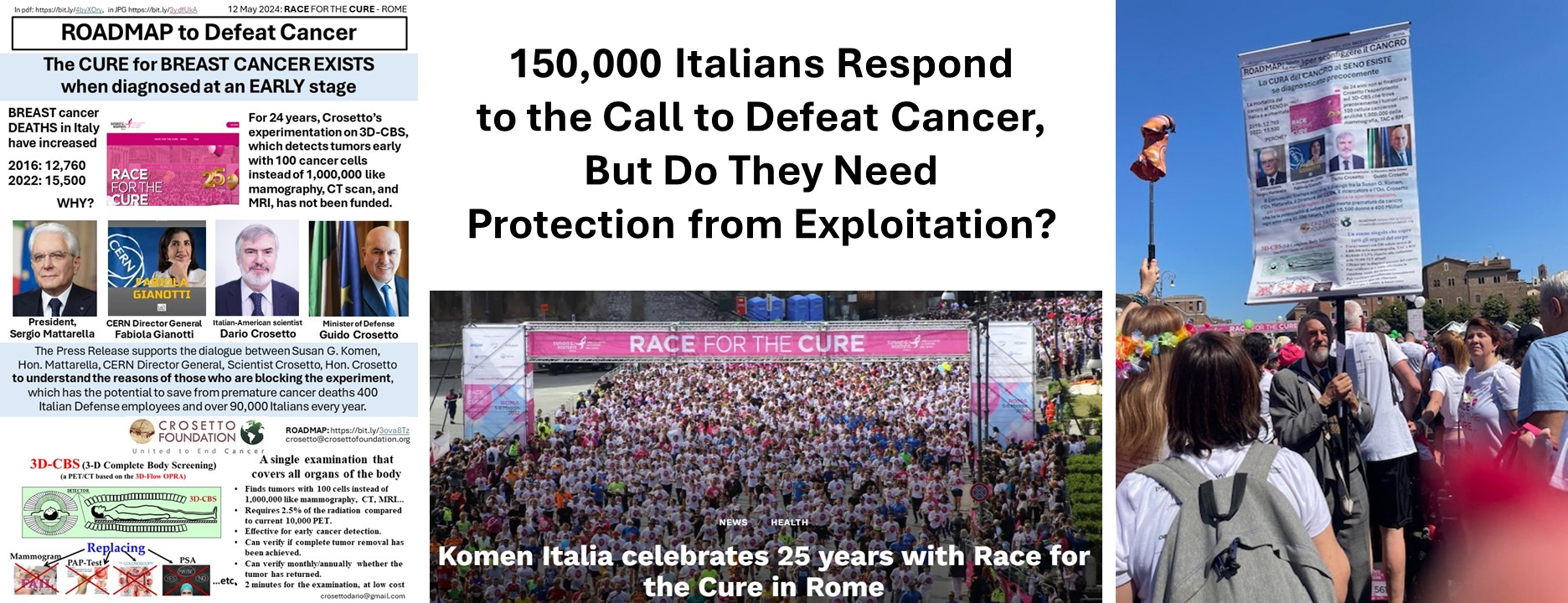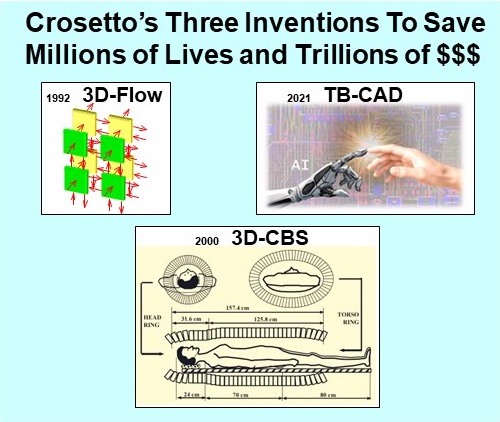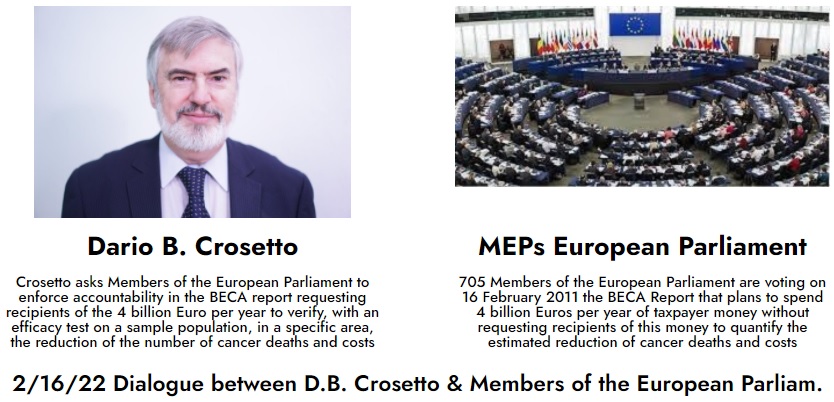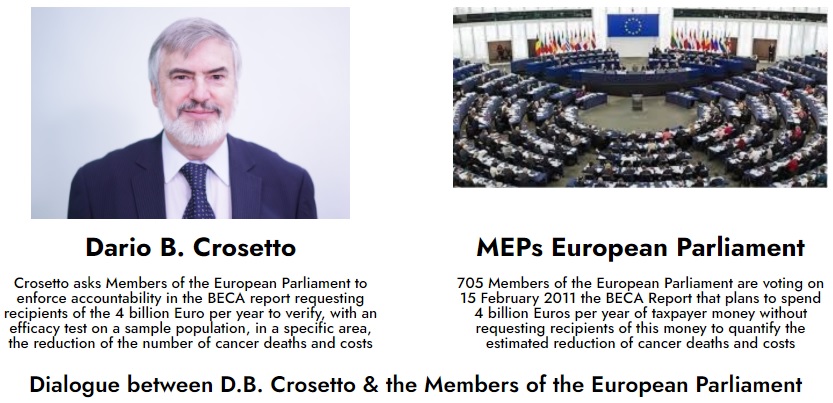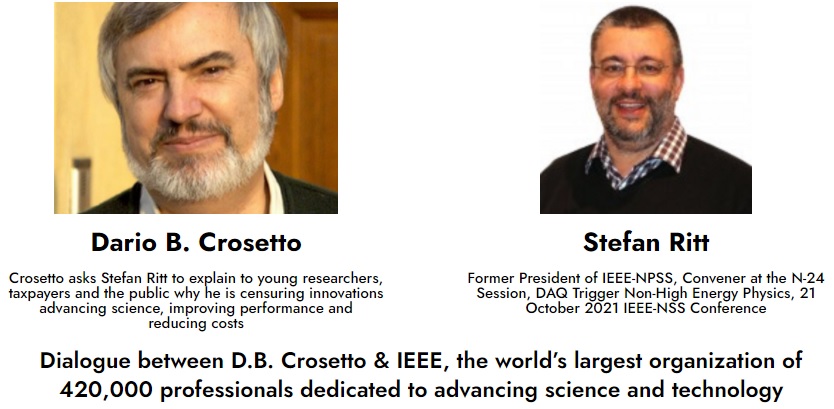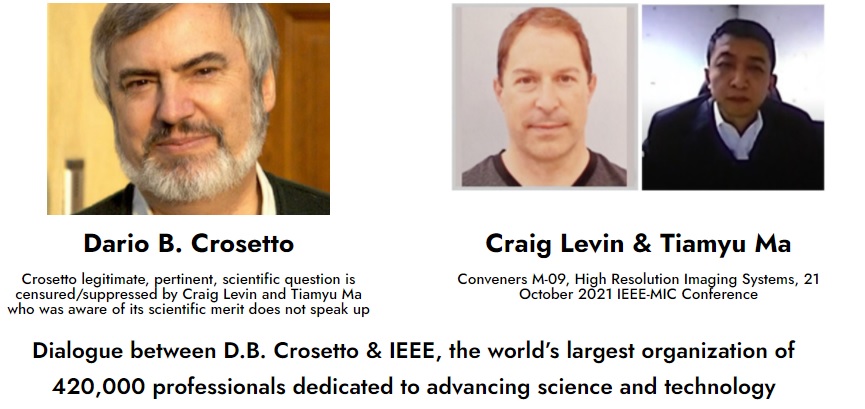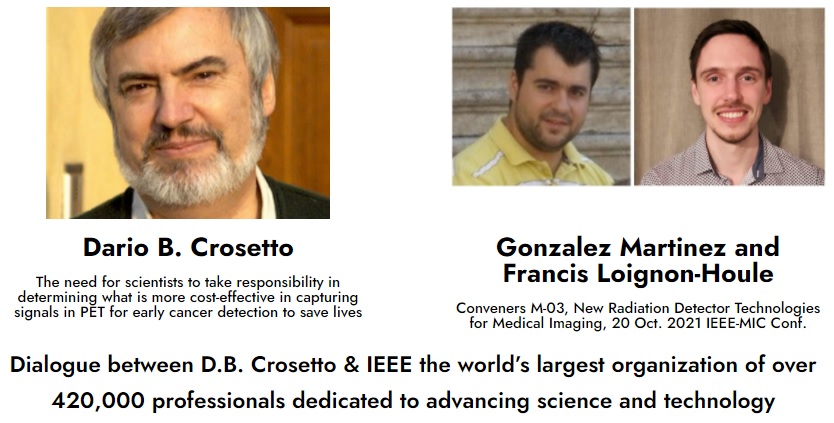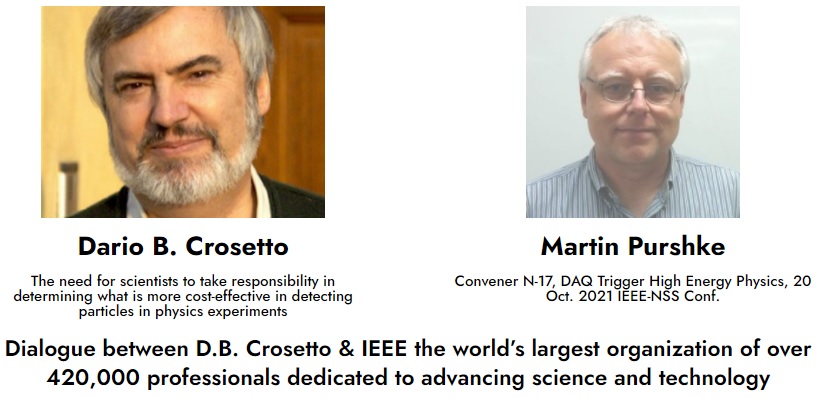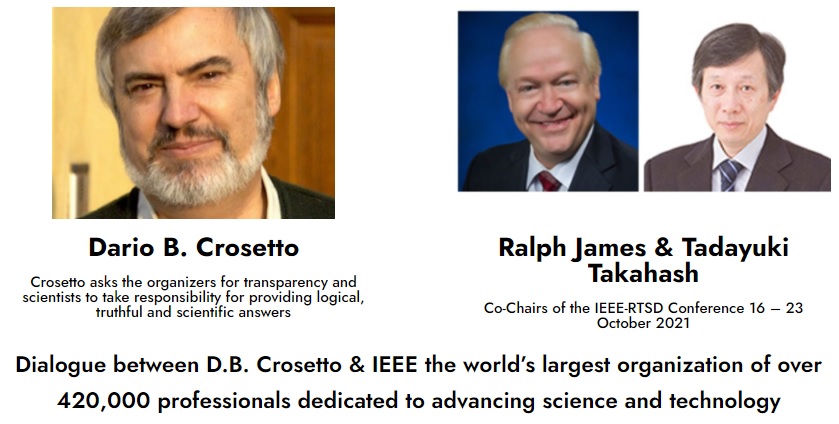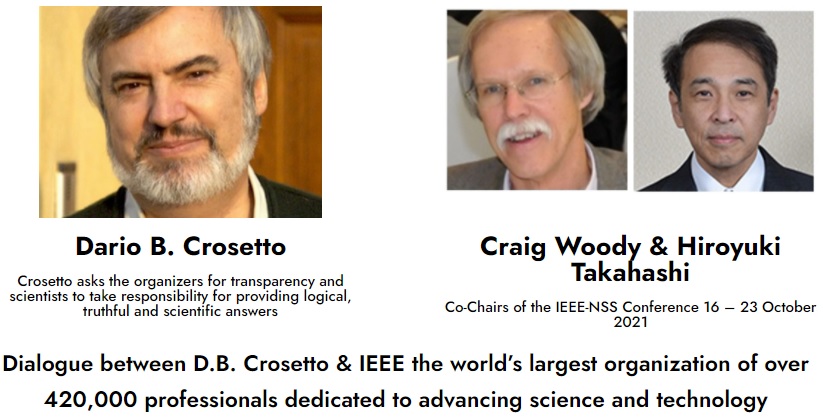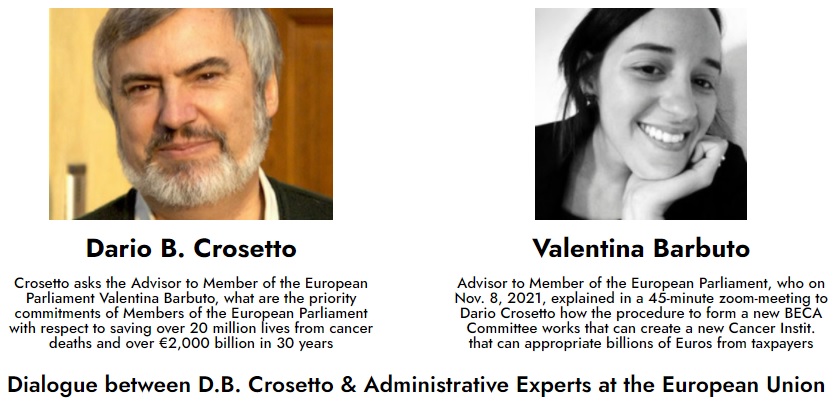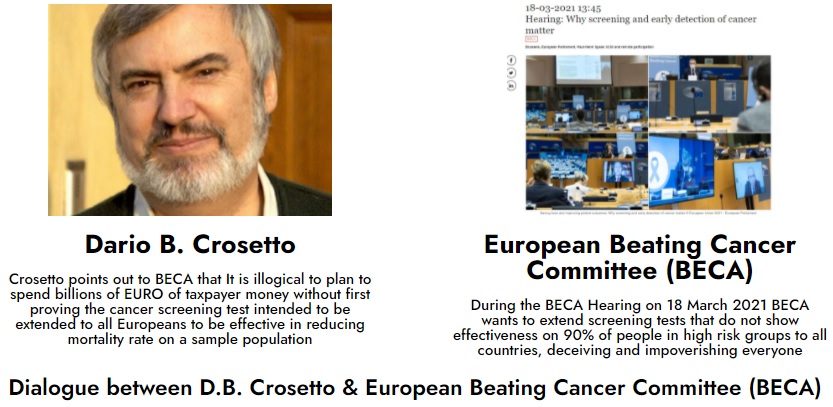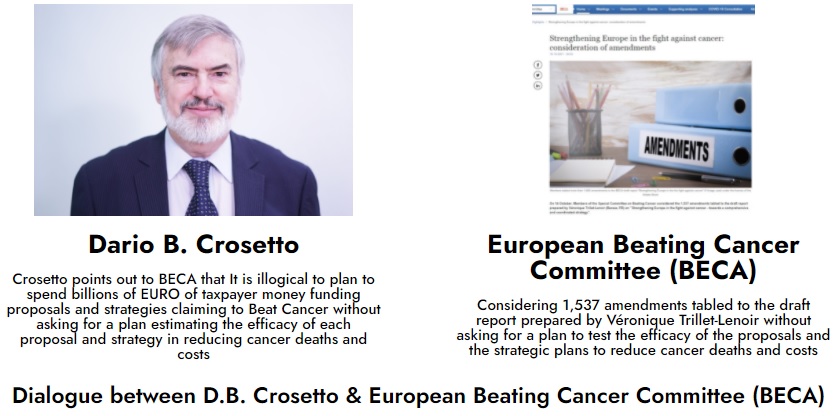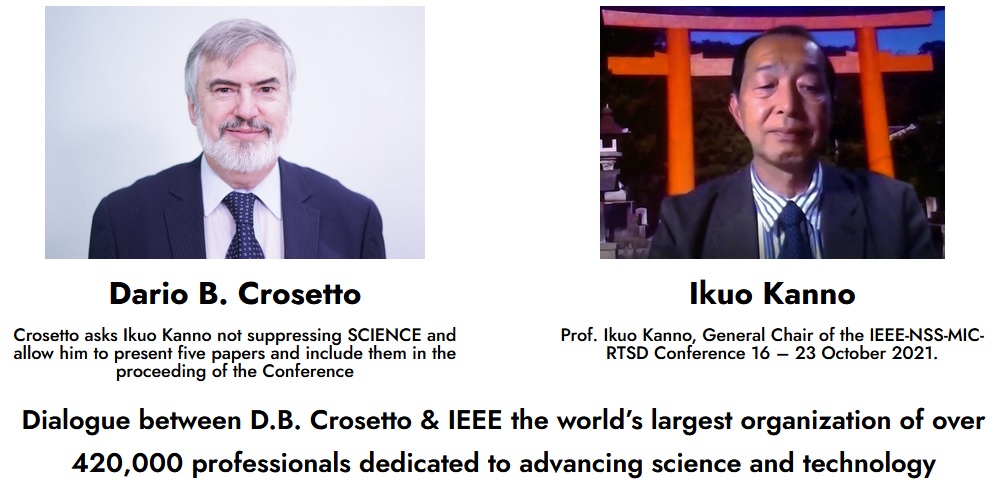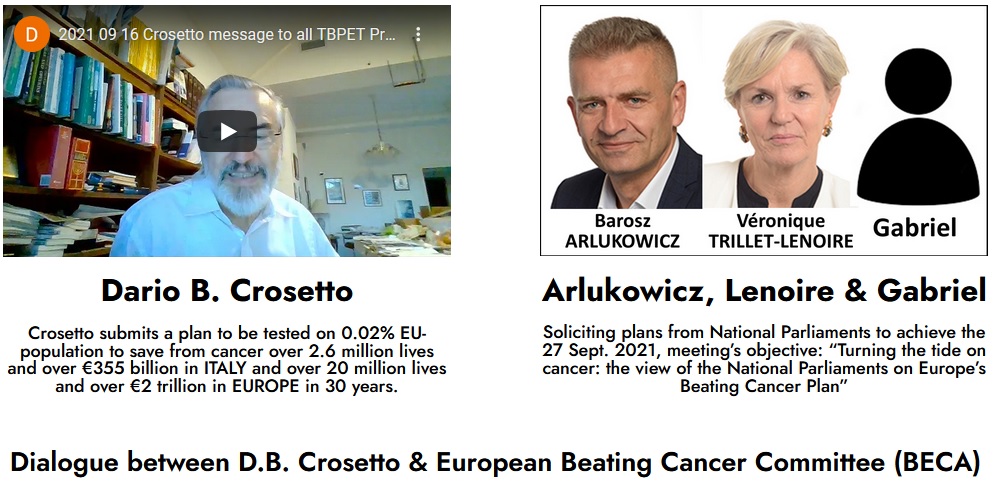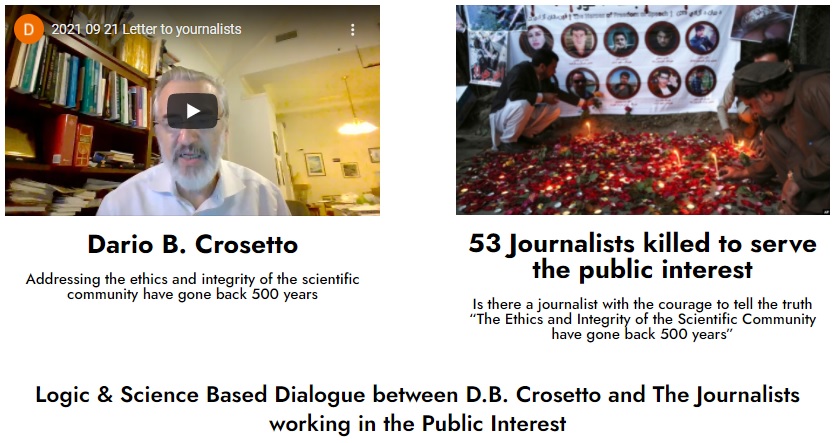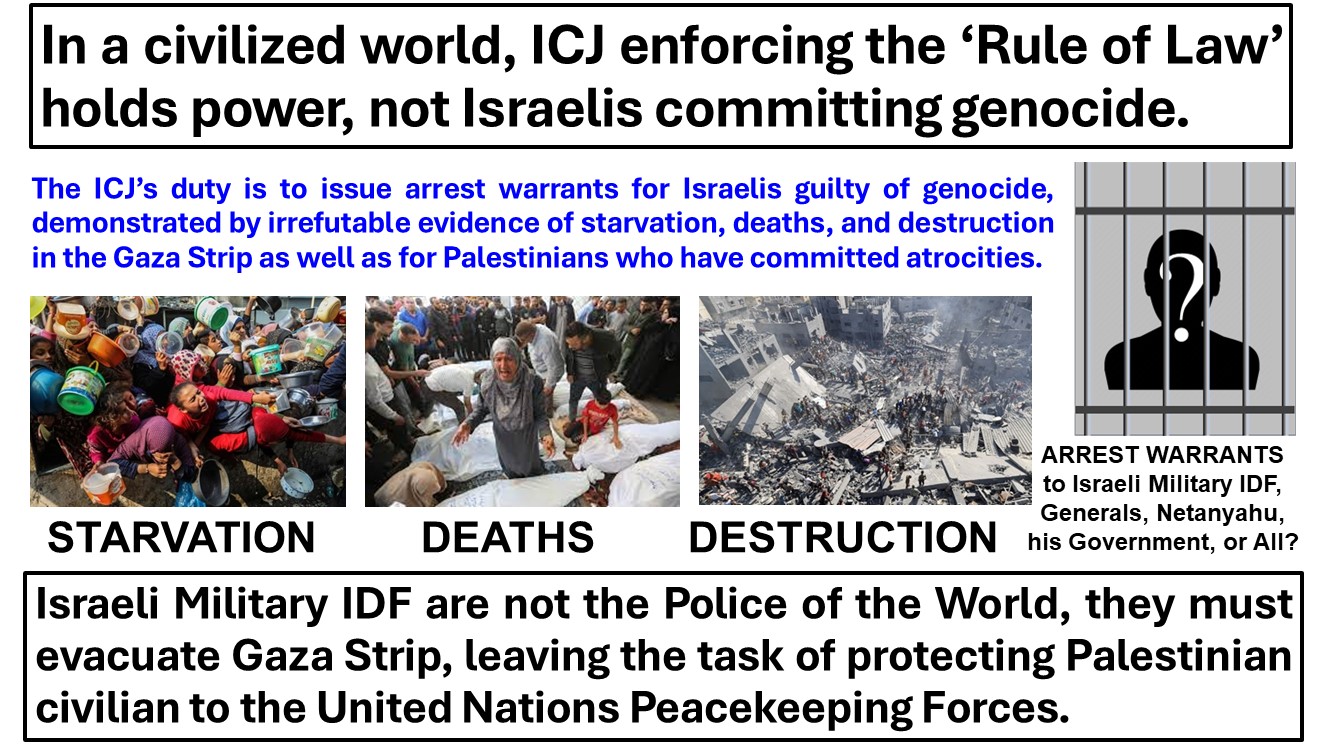1. A CURIOUS
2. A REASONABLE
CURIOUS: Yes, but how much does it cost to save a life from cancer with 3D-CBS compared to the current cost?
REASONABLE: The question is relevant and the current cost of saving a life from cancer can be calculated by an elementary school student. It requires to divide the global cost of cancer by the number of lives saved, which is obtained by subtracting the number of cancer deaths of one year from the previous year. This calculation is simple in Italy because the population is constant at 60 million.
For Italy for example: The cost per life saved is over €17 million, calculated for the year 2012 by dividing the cost of cancer of € 20 billion per year (https://bit.ly/3qVv9pS) by the difference in deaths between 2012 and 2013 which was 1,134 lives saved (https://bit.ly/3fUUDjW see website https://bit.ly/37sreZZ), (€20,000,000,000 divided by 1,134 = €17,636,684). For the other years cancer deaths in Italy increased in the absence of an increase in the population, so the €20 billion/year mainly increased the cancer business (https://bit.ly/3pv3qwe see website https://bit.ly/3pv30Ga).
For the United States: The cost per life saved is over $10 million, calculated for the year 2003 by dividing the cost of cancer by $64 billion annually published in Fortune Magazine March 22, 2004, pp. 76-94 (https://bit.ly/3uRM8KE) by the difference in cancer mortality of 5,800 between 2003 and 2002, normalized for the population increase as reported in more detail on pp. 13-14 of the book published by World Scientific (http://bit.ly/2IM0EjE), ($64,000,000,000 divided by 5,800 = $11,034,482).
Worldwide: The cost per life saved with my 3D-CBS (3-D Complete Body Screening) invention that can be applied anywhere in the world is less than $140,000.
CURIOUS: This is a huge saving! How much is it exactly? How do you explain this difference? How did you calculate the cost per life saved with the 3D-CBS?
REASONABLE: Here is the calculation of the difference in cost:
It would cost 82 times less than in United States ($11,034,482/$134,508 = 82), 152 times less than in 2012 in Italy (€17,636,684 / €115,598 = 152) and 17,301 times less than in other years in Italy (€20,000,000,000 / €115,598 = 17,301). To calculate the cost per life saved with the 3D-CBS I have used the same criteria of dividing the global cost of cancer for a number of years by the number of lives saved in the same period. I will provide more details on this calculation later.
CURIOUS: What about the other countries? How much is the annual cancer cost? And how much is the global cancer cost each year in the world?
REASONABLE: The cost of cancer in United States in 2020 increased to $208.9 billion per year (https://bit.ly/36z8Ptj), while in Japan in 2011 was $88 billion per year (https://bit.ly/3ej0WfM). The global cancer cost (business???) in the world is $2.02 trillion per year (***).
CURIOUS: Who pays this € 20 billion a year for cancer in Italy and $208.9 billion per year in United States, $88 billion per year in Japan, and so on?
REASONABLE: We pay them.
CURIOUS: And how?
REASONABLE: With the tax paid on gasoline, motorways, with the VAT paid on the food we buy, etc.
CURIOUS: And how much does this €20 billion/year in Italy cost to each Italian?
REASONABLE: The elementary school student can again provide the answer by dividing €20 billion per year by the population in Italy of 60 million, i.e. cancer in Italy costs € 333 per person per year (€20,000,000,000 divided by 60,000,000 = €333). For example, a couple with two children, even if the children are only a few months old, the cancer costs them € 1,332 per year even if none of them have ever had cancer have never been to the hospital, to the doctor or took medicine.
In Japan cancer cost is $691 per person per year, in United States is $784 (https://bit.ly/3ej0WfM), while in Romania and Bulgaria is €83, in Poland is €140, in France €502, in Germany €562 and in Switzerland €840 per person per year as published by the European Journal of Cancer (https://bit.ly/3xJkXUA).
CURIOUS: But those who pay more, do they receive more? Such as more people saved or have a lower cancer mortality rate?
REASONABLE: No, data show that globally do not save more lives (***) and do not have a lower mortality rate (https://gco.iarc.fr/today/data/factsheets/cancers/39-All-cancers-fact-sheet.pdf).
CURIOUS: This is really throwing taxpayer money out of the window. Why politicians are permitting this? Why journalists and media do not inform the public?
As an alternative to these € 17 million for each life saved from cancer (or € 20 billion if no life is saved as has happened every year outside of 2012), how much would it cost to save a life from cancer with Dario Crosetto’s 3D-CBS?
It would cost 152 times less than in 2012 (€ 17.636.684 / € 115.598 = 152) and 17.301 times less than in other years (€ 20.000.000.000 / € 115.598 = 17.301), that is, it would cost only € 115.598 for each life saved based on the detailed calculations below and in literature references which are as understandable as the calculations above.
CURIOUS: Now I understand why question *** regarding the 3D-CBS project was asked at the European Parliament, but why this question is not asked at the Italian Parliament, at the US Congress, at the Japanese Parliament and at the Parliaments of many democratic civilized countries in the world?
REASONABLE: It is understandable even to a child that those who manage our tax money are throwing billions of euros out of the window (or funding the cancer business) without being able to reduce cancer mortality, while there are people on the front line who they give body and soul, they work for free, and some even give their lives (such as doctors, nurses, law enforcement, and public service workers who died of COVID-19 to save others), even without resources, to alleviate cancer suffering and mortality.
Faced with this incongruity of being able to save over 2.6 million lives from cancer in Italy and save over € 355 billion in 30 years with the 3D-CBS, it is a duty and urgent that there be at least one deputy who presents a question to the Italian Parliament and ask influential executives who award research grants using taxpayers’ money to express their disagreement with the calculations below regarding Dario Crosetto’s 3D-CBS project.
These calculations are as understandable as those reported above and in case of disagreements, finance the construction of two 3D-CBS devices, so that the JUDGE is the result of an experiment, that is of the test on a sample population in a specific location for verify its effectiveness.







